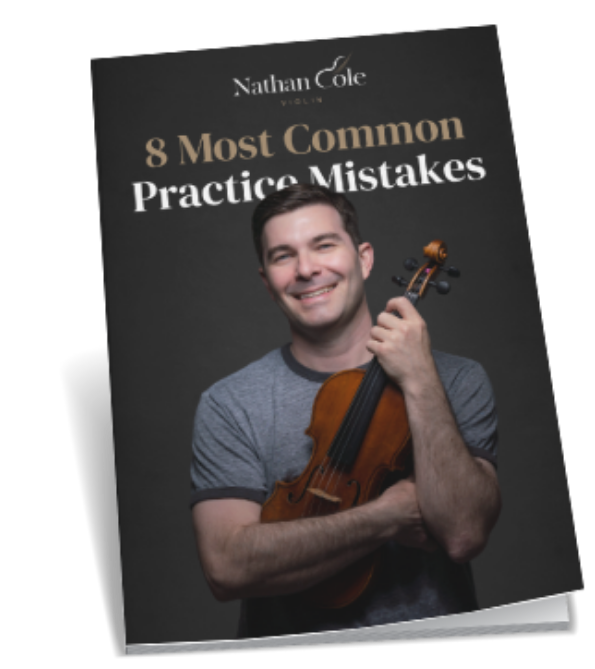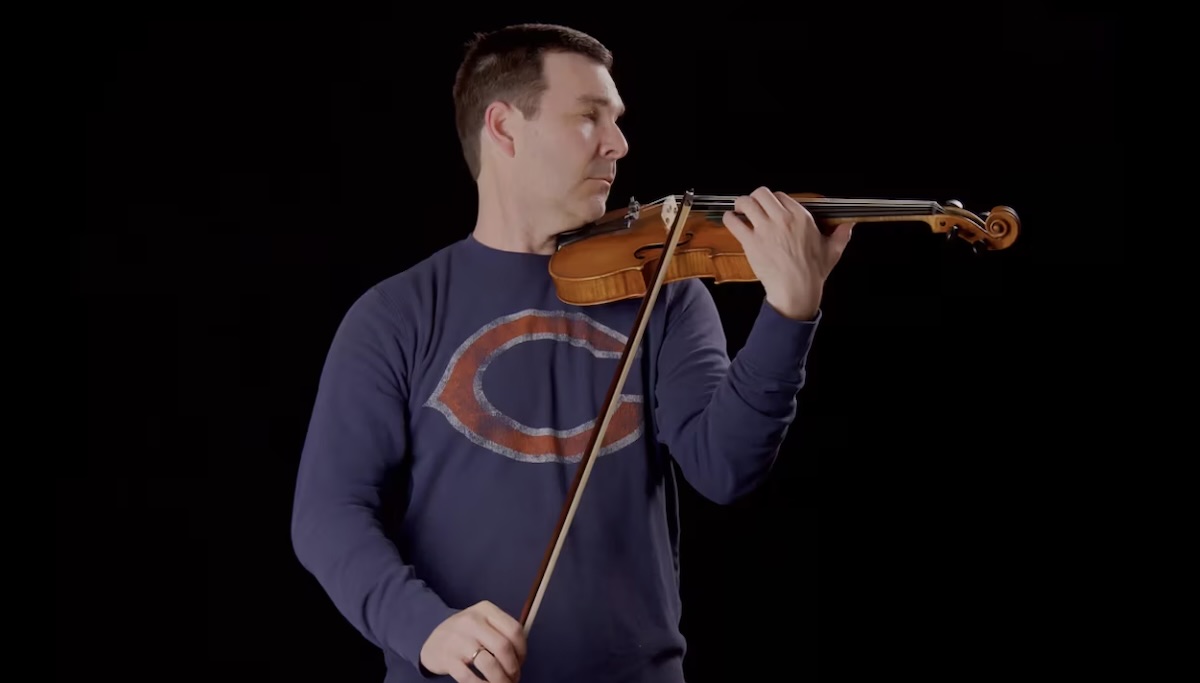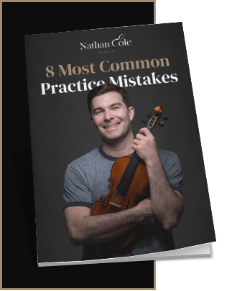Speed up Paganini’s Moto Perpetuo with Parallel Tracks
I have an ambivalent relationship with the metronome. We’ve had enough difficulties over the years that we eventually had to set some ground rules.
Still, the metronome (or its modern cousin, the smartphone app) is never far from my hand in the practice room. It’s one of the most important tools in my kit, in fact!
But I’ve seen metronome practice go so wrong for so many people that, in addition to laying out those Rules of the Metronome, I now feel compelled to go into detail about one of my favorite metronome techniques: Parallel Tracks.
Before you dive in, I’d like for you to download a free companion worksheet for Parallel Tracks. That’s because you’ll want an easy summary of the method to keep by your side as you jump the tracks:
This all comes from the sports world, and the concept of interval training. Instead of “working things up” with the metronome by starting slow and gradually increasing the tempo (which should be your technique of last resort), you constantly mix things up!
In this video, I’ll show you how I alternate between slow and fast tempi, and everything in between, keeping careful notes of my work. And what better piece could there be for a demonstration than Paganini’s Moto Perpetuo?
Comment section
13 thoughts on “Speed up Paganini’s Moto Perpetuo with Parallel Tracks”
Leave a Reply

Scales: The Road
to Repertoire
Even if you’ve never played a scale before, violinist Nathan Cole of the Los Angeles Philharmonic will guide you through scale routines that meet you where you are, and build progressively alongside your playing.



Free Guide: 8 Most Common Practice Mistakes
Lorem ipsum dolor sit amet, consetetur sadipscing elitr, sed diam nonumy eirmod tempor invidunt ut labore et dolore magna aliquyam erat, sed diam.






I read about this method a few years ago. It was a research report from a university comparing methods of learning pieces. Now if I could just remember! It convinced me that interval training in music was just as effective as interval training in sports.
Excellent as always, Nate! Thanks!
Hello Nathan, I was only aware of “Sprints” but I was not aware of the “bigger problem” when you have a very long piece of music. I have always thought: if you want to play fast you have to practice fast. The method of starting with a moderate tempo (for a sprint) and then incrementing the metronome constantly one by one does not work at the end, because your muscles (and your muscle memory) approach 60 bpm and the target of 180 bpm completely differently. So, do not waste practice time and go, after you feel comfortably with the fingerings at 60 bpm (that’s your base line) straight to the target speed decomposing the “sprint” in smaller, interleaving junks. Is this a good way to do? Is the explanation valid? Or how would you bring a sprint to target speed? Maybe I missed something your post.
The idea is to work on both speeds in the same practice session, so you get the benefits of each. As you say, your hand will learn different things at the different speeds. So when you see that something just won’t work fast, you can modify the slow practice to point toward the desired fast version. Similarly, if you can’t play something in tune slowly, you can forget about it working fast. You know that you’ll have to make a change before you can make progress. So the nice middle ground is fast, but small chunks.
I think I will have to watch this video a few more times. It really makes sense to interval train instead of going through the whole piece and trying to raise the metronome as you go along. That becomes a psychological “train wreck”! Thank you for making this topic so understandable.
Nathan Cole, thank you for your parallel tracks video. I will need to review it a few more times on my computer rather than my phone. Your specific ideas are effective for the way I learn. As a retired music teacher who returned to University to study music/trumpet, I am very excited to implement your ideas.
I look forward to learning more from you and applying your ideas into my own learning. As a teacher I find your approach worthy of sharing.
Thank you so very much,
Martin
Always happy to hear from you guys outside the violin world, and glad this is helpful for you!
Hi Nathan
I have watched a couple of your tutorial videos 4th finger and vibrato
They are very good I have started to practice your method
have you anything else to help a struggling wannabe intermediate player
many Thanks for your excellent instruction
Geoff Grimes
Well, there are lots more articles and videos! 🙂 In particular, if you haven’t read about the 3 Variables that would be a great place to start.
Nice comparison to endurance sports. I used to run distance in my youth and interval trainings were key to this, so the approach you describe is interesting esp. as I have been playing this moto perpetuo as a study over the last 12 months.
I have never tried the approach you describe, you made me want to try. I have been practicing this piece as a daily study in pretty much any other possible way :
first learning the left hand & intonation slurring by 4, then by 8 , 16 , 32, and even by 48 trying to keep as clean a sound as possible. This helped me playing this piece fast esp. when reaching “slurred by 32” level.
Then, and only then, I started playing it spiccato, first by quadrupling each note, then by tripling each note, then by doubling,
And then finally (but only then) by playing spiccato. This is quite a long way to learn this piece but I am now happily playing this piece at around 125-130 bpm, I love the endurance it requires , kind of puts me “in the zone” after a long day at work !
and , despite a simple piece for the right hand, it definitely brought my bowing technique back to a better level. Now my next improvement will be to keep a clean spiccato in the arpeggios when bowing across the four strings, and to introduce more nuance in the spiccato. I find it hard to move from piano/dolce to forte in spiccato.
on a side note may I ask you what violin you play, sir ? I quite like the sound your trebles
This is a life changing method for me who has been spending my life with metronome. This video really shed a new light on using a metronome, having me away from its typical use. Thank you very, very much Nathan!!
Awesome Joanna, thanks!
Very useful information, thank you Nathan! But do you actually use the baseline tempo for any of your work? It’s pretty clear why writing down sprint tempos would useful, though I’m a bit fuzzy on how/why/when the baseline or intermediate section tempi are used.